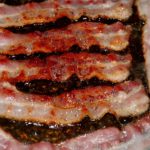While the use of cannabis dates back thousands of years, it’s only recently that the plant has gained mainstream acceptance. And with the cannabis market experiencing an explosion in growth, the industry is expected to grow from $28.27 billion in 2021 to a mind-boggling $197.74 billion in 2028.
Users of cannabis can now find it in individual compounds isolated from the cannabis plant. These compounds are referred to as cannabinoids, which essentially interact with cannabinoid receptors within the endocannabinoid system to cause a variety of effects.
Currently, there are well over 100 types of cannabinoids that have been identified. Today, however, we’ll focus on ten of the most popular cannabinoids and how using them can benefit you.
Tetrahydrocannabinol (THC)
THC is easily the most well-known cannabinoid. It is the primary psychoactive compound in cannabis, meaning it is responsible for the “high” that users experience.
THC has many potential benefits. For instance, the compound is known to be an effective pain reliever. It can also help to improve appetite and reduce nausea.
THC is also being studied for its potential to help with other conditions, such as anxiety, depression, and even cancer.
Cannabidiol (CBD)
Few cannabinoids have gained wider popularity than cannabidiol. In America alone, 64% of the population says they’re familiar with CBD products.
So what’s CBD?
It’s the second most abundant cannabinoid in the cannabis plant after THC. CBD is non-psychoactive, meaning it won’t get you high. This is generally the main difference between CBD and THC.
CBD has a whole host of potential benefits. The compound is known to be an effective pain reliever, much like THC. CBD can also help to reduce anxiety and inflammation.
Some suggest that CBD may help to improve sleep quality, besides helping with epilepsy, cancer, and even Alzheimer’s disease.
Users of CBD can find it in different forms, including oils, tinctures, capsules, and edibles. Some top suppliers also make the compound available in an all-organic smokable hemp flower.
Tetrahydrocannabivarin (THCV)
THCV is a lesser-known cannabinoid, but it’s gaining popularity as more research is conducted on the compound. THCV is similar to THC in that it is psychoactive. However, the high produced by THCV is said to be more clear-headed and cerebral than that of THC.
One of the benefits of THCV is that it’s an effective appetite suppressor. The compound has also been shown to improve energy levels and reduce anxiety. Other conditions the compound may help relieve include Alzheimer’s disease, Parkinson’s disease, and diabetes.
Cannabigerol (CBG)
CBG is a non-psychoactive cannabinoid that is said to be the “parent” of THC and CBD. That’s because CBG is the compound from which THC and CBD are derived.
CBG is known to be an effective anti-inflammatory. The compound has also been shown to improve energy levels and reduce anxiety. CBG is also being studied for its potential to treat other conditions, such as cancer, glaucoma, and Huntington’s disease.
Cannabichromene (CBC)
CBC is another non-psychoactive cannabinoid. The compound is extracted from cannabis plants that are high in THC.
CBC is known to be an effective pain reliever and anti-inflammatory. It also helps improve mood and reduce anxiety. Some studies also suggest that CBC may help to enhance the quality of sleep and reduce the spread of cancer cells.
Cannabinol (CBN)
CBN is formed when THC is exposed to oxygen and light. This process is called oxidation. CBN is a non-psychoactive cannabinoid, meaning it won’t get you high.
However, the compound is responsible for the “couch-lock” effect that some users experience.
CBN has several potential benefits. The compound is known to be an effective sleep aid. Additionally, CBN can help to relieve pain and reduce inflammation.
Some studies also suggest that CBN may help to treat other conditions, such as glaucoma and Huntington’s disease.
Cannabidivarin (CBDV)
The molecular structure of CBDV is similar to that of CBD. CBDV is non-psychoactive, meaning it won’t get you high.
CBDV is known to be an effective anti-nausea compound. It may also improve energy levels, reduce anxiety, help with epilepsy, and treat neurodegenerative disorders.
Tetrahydrocannabinolic Acid (THCA)
THCA is the non-psychoactive form of THC. The compound is found in raw and live cannabis plants. When THC is decarboxylated, it converts to THCA.
The compound is known to be an effective anti-inflammatory and pain reliever. THCA has also been shown to improve mood and reduce anxiety. Additionally, some studies suggest that THCA may help to treat other conditions, such as Alzheimer’s disease, cancer, and Crohn’s disease.
Cannabidiolic Acid (CBDA)
Cannabidiolic acid is the acidic precursor of CBD. The compound is found in raw and live cannabis plants. When CBD is exposed to heat or light, it converts to CBDA.
CBDA is known to be an effective antidepressant.
Cannabigerolic Acid (CBGa)
Cannabigerolic acid is often known as the mother of all cannabinoids. Without it, none of the other cannabinoids would exist. Like CBD, CBGa is non-psychoactive.
CBGa is known to be an effective anti-inflammatory. The compound has been shown to improve energy levels and reduce anxiety. Some studies also suggest that CBGa may help to treat other conditions, such as Alzheimer’s disease and cancer.
Use the Right Types of Cannabinoids for You
As you can see, there are many types of cannabinoids, each with its own set of potential benefits. So if you’re ever feeling pain, anxiety, or even just looking for a good night’s sleep, be sure to give one of these compounds a try. You just might be surprised by the results.
Did you enjoy reading this article?
Keep visiting our blog for more interesting content.

